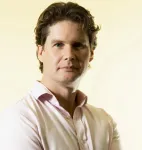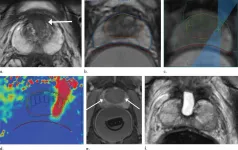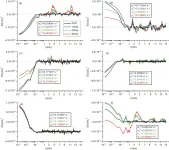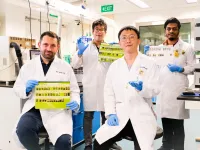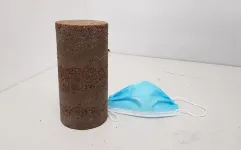(Press-News.org) Scientists and engineers at the University of Sydney and Microsoft Corporation have opened the next chapter in quantum technology with the invention of a single chip that can generate control signals for thousands of qubits, the building blocks of quantum computers.
"To realise the potential of quantum computing, machines will need to operate thousands if not millions of qubits," said Professor David Reilly, a designer of the chip who holds a joint position with Microsoft and the University of Sydney.
"The world's biggest quantum computers currently operate with just 50 or so qubits," he said. "This small scale is partly because of limits to the physical architecture that control the qubits."
"Our new chip puts an end to those limits."
The results have been published in Nature Electronics.
Most quantum systems require quantum bits, or qubits, to operate at temperatures close to absolute zero (-273.15 degrees). This is to prevent them losing their 'quantumness', the character of matter or light that quantum computers need to perform their specialised computations.
In order for quantum devices to do anything useful, they need instructions. That means sending and receiving electronic signals to and from the qubits. With current quantum architecture, that involves a lot of wires.
"Current machines create a beautiful array of wires to control the signals; they look like an inverted gilded birds' nest or chandelier. They're pretty, but fundamentally impractical. It means we can't scale the machines up to perform useful calculations. There is a real input-output bottleneck," said Professor Reilly, also a Chief Investigator at the ARC Centre for Engineered Quantum Systems (EQUS) .
Microsoft Senior Hardware Engineer, Dr Kushal Das, a joint inventor of the chip, said: "Our device does away with all those cables. With just two wires carrying information as input, it can generate control signals for thousands of qubits.
"This changes everything for quantum computing."
The control chip was developed at the Microsoft Quantum Laboratories at the University of Sydney, a unique industry-academic partnership that is changing the way scientists tackle engineering challenges.
"Building a quantum computer is perhaps the most challenging engineering task of the 21st century. This can't be achieved working with a small team in a university laboratory in a single country but needs the scale afforded by a global tech giant like Microsoft," Professor Reilly said.
"Through our partnership with Microsoft, we haven't just suggested a theoretical architecture to overcome the input-output bottleneck, we've built it.
"We have demonstrated this by designing a custom silicon chip and coupling it to a quantum system," he said. "I'm confident to say this is the most advanced integrated circuit ever built to operate at deep cryogenic temperatures."
If realised, quantum computers promise to revolutionise information technology by solving problems beyond the scope of classical computers in fields as diverse as cryptography, medicine, finance, artificial intelligence and logistics.
POWER BUDGET
Quantum computers are at a similar stage that classical computers were in the 1940s. Machines like ENIAC, the world's first electronic computer, required rooms of control systems to achieve any useful function.
It has taken decades to overcome the scientific and engineering challenges that now allows for billions of transistors to fit into your mobile phone.
"Our industry is facing perhaps even bigger challenges to take quantum computing beyond the ENIAC stage," Professor Reilly said.
"We need to engineer highly complex silicon chips that operate at 0.1 Kelvin," he said. "That's an environment 30 times colder than deep space".
Dr Sebastian Pauka's doctoral research at the University of Sydney encompassed much of the work to interface quantum devices with the chip. He said: "Operating at such cold temperatures means we have an incredibly low power budget. If we try to put more power into the system, we overheat the whole thing."
In order to achieve their result, the scientists at Sydney and Microsoft built the most advanced integrated circuit to operate at cryogenic temperatures.
"We have done this by engineering a system that operates in close proximity to the qubits without disturbing their operations," Professor Reilly said.
"Current control systems for qubits are removed metres away from the action, so to speak. They exist mostly at room temperature.
"In our system we don't have to come off the cryogenic platform. The chip is right there with the qubits. This means lower power and higher speeds. It's a real control system for quantum technology."
YEARS OF ENGINEERING
"Working out how to control these devices takes years of engineering development," Professor Reilly said. "For this device we started four years ago when the University of Sydney started its partnership with Microsoft, which represents the single biggest investment in quantum technology in Australia.
"We built lots of models and design libraries to capture the behaviour of transistors at deep cryogenic temperatures. Then we had to build devices, get them verified, characterised and finally connect them to qubits to see them work in practice."
Vice-Chancellor and Principal of the University of Sydney, Professor Stephen Garton, said: "The whole university community is proud of Professor Reilly's success and we look forward to many years of continued partnership with Microsoft."
Professor Reilly said the field has now fundamentally changed. "It's not just about 'here is my qubit'. It's about how you build all the layers and all the tech to build a real machine.
'Our partnership with Microsoft allows us to work with academic rigour, with the benefit of seeing our results quickly put into practice."
The Deputy Vice-Chancellor (Research), Professor Duncan Ivison, said: "Our partnership with Microsoft has been about realising David Reilly's inspired vision to enable quantum technology. It's great to see that vision becoming a reality."
Professor Reilly said: "If we had remained solely in academia this chip would never have been built."
The Australian scientist said he isn't stopping there.
"We are just getting started on this new wave of quantum innovation," he said. "The great thing about the partnership is we don't just publish a paper and move on. We can now continue with the blueprint to realise quantum technology at the industrial scale."
INFORMATION:
DOWNLOAD images, photos and a copy of the research paper at this link.
INTERVIEWS
Professor David Reilly | david.reilly@sydney.edu.au
MEDIA ENQUIRIES
Marcus Strom | marcus.strom@sydney.edu.au | +61 423 982 485
DECLARATION
This research was supported by Microsoft Corporation and the Australian Research Council Centre of Excellence for Engineered Quantum Systems. We acknowledge the facilities as well as the scientific and technical assistance of the Research and Prototype Foundry, a Core Research Facility at the University of Sydney, and a part of the Australian National Fabrication Facility (ANFF).
RESEARCH PAPER
Nature Electronics DOI: 10.1038/ s41928-020-00528-y
'A cryogenic CMOS chip for generating control signals for multiple qubits'
S. J. Pauka, et al (2021)
New research from the Okinawa Institute of Science and Technology Graduate University (OIST) has found a surprising randomness for how fluids choose their path around obstacles that depends on their spacing. This has important implications for a range of scenarios - from oil recovery and groundwater remediation, to understanding the movement of fluids through biological systems. The research was published in Physical Review Letters.
Scientists from OIST's Micro/Bio/Nanofluidics Unit created a tiny set up comprised of two microscopic cylinders, each around the width of a human hair, placed side-by-side in a channel. This created a choice of three possible paths for a fluid to take past the pair of obstacles. A viscoelastic fluid, which is like that ...
OAK BROOK, Ill. - A technique that delivers high-intensity focused ultrasound to targeted tissue under MRI guidance effectively treats intermediate-risk prostate cancer with minimal side effects, according to a study published in Radiology.
Prostate cancer is the most common cancer among men, aside from non-melanoma skin cancers. Common treatments to the entire gland, such as surgery and radiation therapy, are effective in eliminating the cancer, but they often leave patients with incontinence and sexual dysfunction.
A class of treatments called focal therapy offers an alternative for some men with intermediate-risk disease that is still confined to the prostate. In focal therapy, the cancer is ablated, or destroyed, by either ...
By late summer 2020, the resurgence of COVID-19 in the United States was largely driven by adults between the ages of 20 and 49, a new study finds. The results indicate that in locations where novel highly transmissible SARS-CoV-2 lineages have not yet established, additional interventions among adults of these ages could bring resurgent COVID-19 epidemics under control and avert deaths. Following initial declines in the number of reported SARS-CoV-2 infections and deaths - a result largely attributed to non-pharmaceutical interventions - a resurgence in transmission of COVID-19 occurred in the United States and Europe beginning in August 2020. Understanding the age demographics that drove this is crucial. For example, between August ...
Laser particles are micrometre and nanometre lasers in the form of particles dispersible in aqueous solution, which have attracted considerable interest in the life sciences as a promising new optical probe. Laser particles emit highly bright light with extremely narrow spectral bandwidth. By transferring laser particles into live cells as shown in Figure 1, individual cells in a heterogeneous population can be tracked using each intracellular particle's specific spectral fingerprint as an optically readable barcode. However, laser particles emit directional light (Figure 2) and freely tumble inside living cells, their orientation varying randomly over time. Therefore optical readout of these labels results ...
Loess Plateau possesses a particular loess physiognomy with numerous ravines and slopes, and tableland is a typical landform in it. Together, the ununiform in both topographic undulation and land coverage compose the ununiform, complex underlying surface on Loess Plateau. This provides a special platform for research of turbulence above the complex underlying surface.
As the front-edge problem encountered in the atmospheric boundary layer thesis, the turbulence research for complex underlying surface has drawn extensive attention recently. Local similarity has already proven that under certain condition, theories of turbulence based on the uniform underlying surface can also be applied to which for the ununiform underlying surface. ...
A team from Nanyang Technological University, Singapore (NTU Singapore) has developed a portable device that produces high-resolution 3D images of human skin within 10 minutes.
The team said the portable skin mapping (imaging) device could be used to assess the severity of skin conditions, such as eczema and psoriasis.
3D skin mapping could be useful to clinicians, as most equipment used to assess skin conditions only provide 2D images of the skin surface. As the device also maps out the depth of the ridges and grooves of the skin at up to 2mm, it could also help with monitoring wound healing.
The device presses a specially devised film onto the subject's skin to obtain an imprint of up to 5 by 5 centimetres, which is then ...
A satellite-based dataset generated by KAUST researchers has revealed the dynamics of dust storm formation and movements over the last decade in the Arabian Peninsula. Analysis of this long-term dataset reveals the connection between the occurrence of extreme dust events and regional atmospheric conditions, a finding that could help improve weather forecasting and air-quality models.
Dust storms occur when strong winds lift tiny particles of sand into the atmosphere. These events often span several miles and can have an enormous impact on daily life, from damaging buildings and disrupting air traffic to triggering respiratory illnesses and other health problems.
The Arabian Peninsula is a global hotspot of extreme dust events, with storms occurring ...
Residential gardens are a poor substitute for native bushland and increasing urbanisation is a growing threat when it comes to bees, Curtin University research has found.
Published in 'Urban Ecosystems', the research looked at bee visits to flowers, which form pollination networks across different native bushland and home garden habitats.
Lead author, Forrest Foundation Scholar Miss Kit Prendergast, from Curtin's School of Molecular and Life Sciences said the findings highlight the need to prevent destruction of remaining bushland and preserve native vegetation, in order to protect sustainable bee communities and their pollination services.
"Our study involved spending hundreds of hours at 14 sites on the Swan Coastal Plain at Perth, Western Australia, ...
Researchers have shown how disposable face masks could be recycled to make roads, in a circular economy solution to pandemic-generated waste.
Their study shows that using the recycled face mask material to make just one kilometre of a two-lane road would use up about 3 million masks, preventing 93 tonnes of waste from going to landfill.
Developed by researchers at RMIT University in Melbourne, Australia, the new road-making material is a mix of shredded single-use face masks and processed building rubble designed to meet civil engineering safety standards. ...
Researchers from Peter the Great St.Petersburg Polytechnic University (SPbPU) in collaboration with colleagues from Belgium take a step in the development of genome editing technology. Currently it is possible to deliver genetic material of different sizes and structures to organs and tissues. This is the key to eliminating DNA defects and treating more patients. The project is guided by Professor Gleb Sukhorukov and supported by the Russian Science Foundation. Research results were published in Particle & Particle Systems Characterization journal.
An international research group developed a polymer ...
